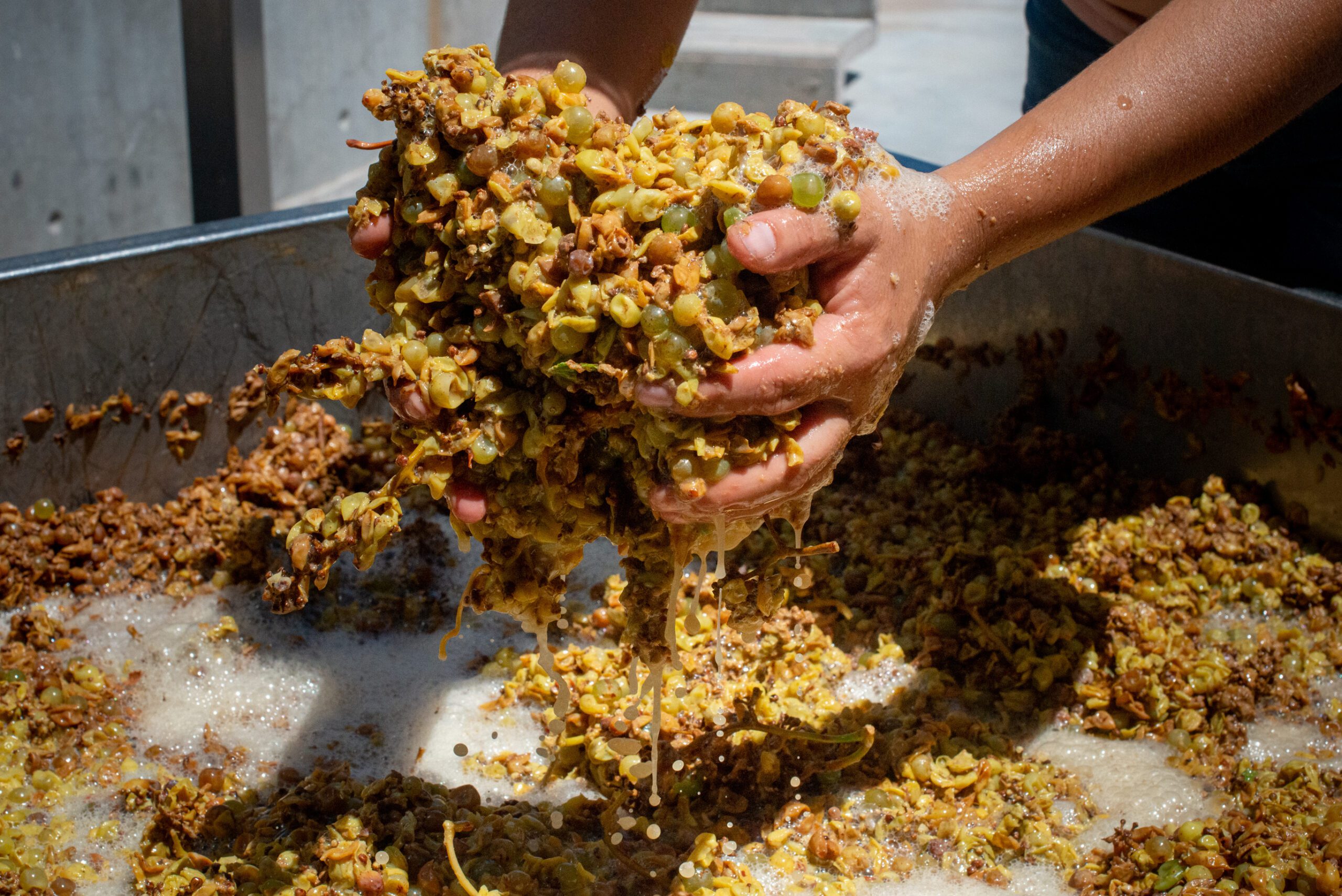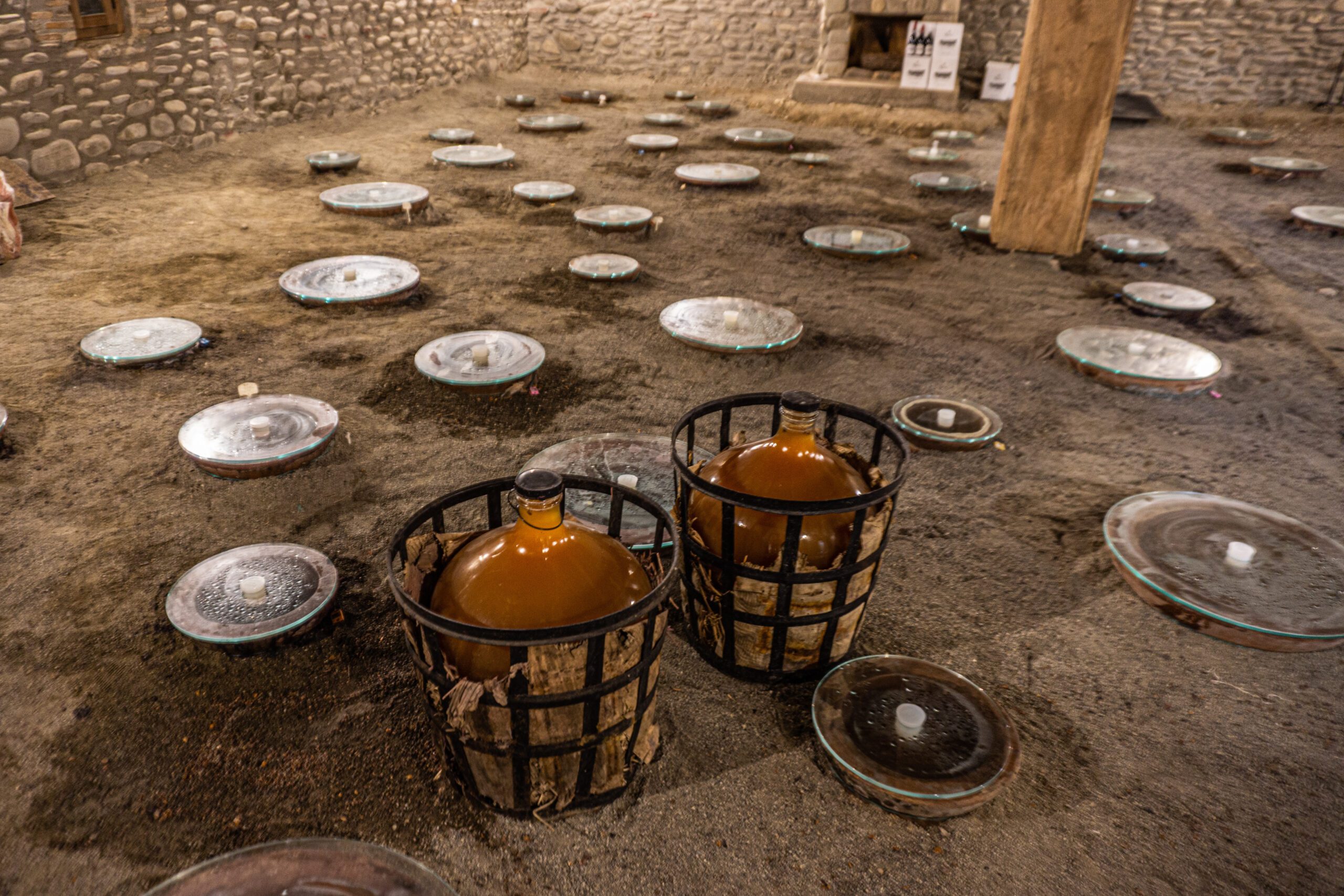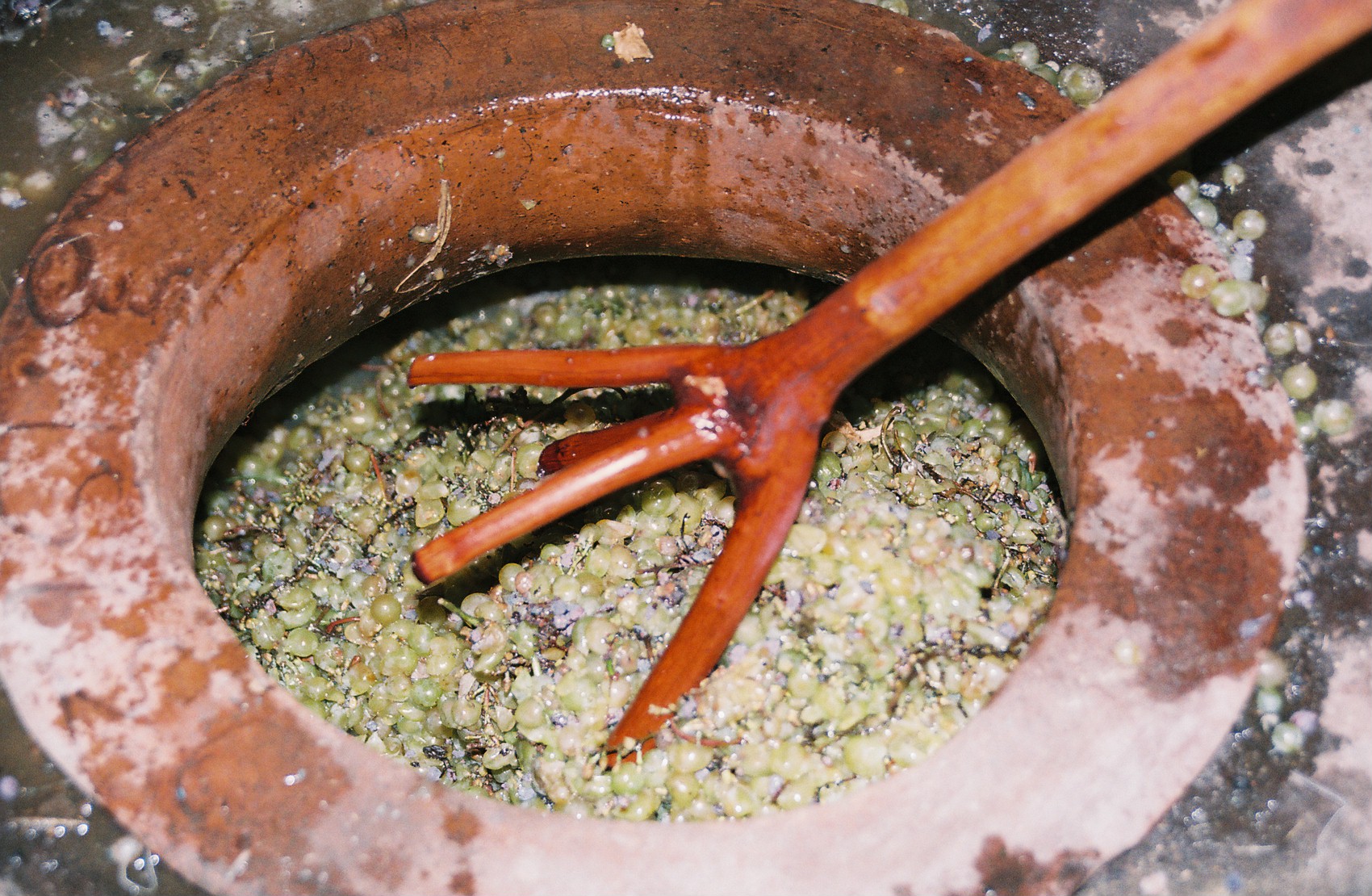By Valentina Phillips
Photos courtesy of Georgian Wine Association
In a world of reds, whites, and rosés, one wine stands out for its taste and its captivating color – orange wine. Although not exactly orange but a blend of amber shades, this wine has recently seen a surge in popularity, providing a distinct tasting adventure. So, let’s peel back the layers and unveil the intriguing mysteries that make orange wine as cool as it looks.

Where White Meets Red
Initially dubbed "Orange Wine" by British wine importer David Harvey, it's better recognized as "skin contact" or amber wine. Essentially, it's white wine made using red wine methods. Unlike the usual white wine process, where grape skins are swiftly removed from the juice, orange wine involves a lengthier skin contact during fermentation. This extended interaction, lasting from days to months, lets the wine absorb a range of flavors and compounds, infusing it with distinctive tastes, tannins, and a color palette from pale gold to deep amber or orange.

From Ancient Roots to Modern Splendor
Orange wine, while trending today, isn't a recent discovery. Its origins can be traced back thousands of years to the Caucasus region, encompassing present-day Georgia, where winemakers fermented white grapes with their skins and seeds in underground clay vessels called qvevris. This method, born out of necessity for preservation in ancient times, remains a traditional practice in Georgia, known locally as amber wine.
The tradition spread across Europe as centuries passed, with Georgian, Slovenian, and Italian orange wines maintaining their prominence. Today, this captivating winemaking technique has ventured into new world regions like Australia, South Africa, and New York, adding a vibrant twist to the global wine landscape.

A Love-It-or-Leave-It Adventure for Enthusiasts
The reality is skin-contact wine, like cilantro, isn't for everyone. However, for enthusiasts, it's a true passion. Orange wine's charm lies in its unpredictability. Crafted from diverse white grapes like pinot grigio, ribola gialla, rkatsiteli, or sauvignon blanc, the taste of orange wine unfolds uniquely with each sip. Described as robust akin to red wines yet refreshing like whites, orange wines offer a delightful blend of flavors: honey, tropical berries, nuts, apples, and a subtle citrus note. They possess the tannic richness of reds and the zing of fruit beer.

Orange wine is a provocative, unconventional, and gloriously unapologetic addition to the world of wine. And while it may not suit everyone's palate, for those who embrace its zesty distinctiveness, it's a celebratory ode to the unexpected and the wonderfully orange.



